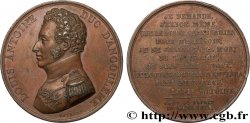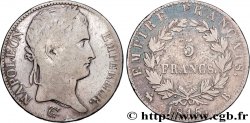正面
正面的文字 NAPOLEON - EMPEREUR..
正面的说明书 Tête laurée de Napoléon Ier à gauche ; signé DROZ F sur la tranche du cou ; au-dessous Tr. cursif.
背面
背面的文字 EMPIRE FRANCAIS./ 20/ FRANCS./ (MM) 1815. W.
背面的说明书 dans une couronne formée de deux branches de laurier.
历史细节
LES CENT JOURS / THE HUNDRED DAYS
(20/03/1815-22/06/1815)
On April 6, 1814, Napoleon I signed his abdication.. By the Treaty of Fontainebleau of April 11, the Allies recognized him as Emperor with the sovereignty of the island of Elba and an income of two million.. They also grant Marie-Louise the sovereignty of the Duchies of Parma, Piacenza and Guastalla. Napoleon bids farewell to his guard on April 20 and arrives on the island of Elba on May 4, 1814 where he will devote himself to the administration of his "empire". Concerned about the Congress of Vienna and the presence of the Prince Imperial at Schönbrunn, helped by partisans, Napoleon landed at Golfe-Juan on March 1, 1815 and went up to Paris by the road to the Alps.. He rallies the troops and on March 21 arrives triumphantly at the Tuileries, it is the beginning of the Hundred Days. He quickly published an additional Act to the Constitutions of the Empire to reconnect with the revolutionary ideal. Against him, the powers gathered at the Congress of Vienna form a new coalition. In June, Napoleon defeated the Prussians at Ligny on the 16th but lost definitively at Waterloo on the 18th.. Back in Paris, he signed his second abdication on June 22 in favor of his son, recognized by the Chambers as Napoleon II.. It's the end of a hundred days. Napoleon surrendered to the English on July 15, who decided to deport him to the island of Saint Helena where he landed in October. He dictated his memoirs and the story of his campaigns before dying in 1821 at the age of fifty-two..








 对产品描述纠错
对产品描述纠错 打印
打印 分享我的选择
分享我的选择 提问
提问 Consign / sell
Consign / sell
 产品介绍
产品介绍









